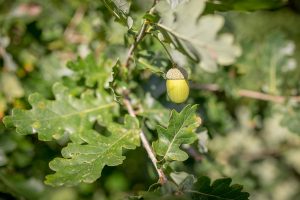HMRC can’t see the wood for the trees.

Occasionally HMRC takes VAT positions that appear to contradict their own policy. An example of this occurs in the case of Will Woodlands which concerns a Charity that has a wood.
The sale of timber is a business activity that involves making taxable supplies. This means that forest owners are able to register for VAT and recover the VAT they incur on their costs. The trees are essentially a crop. The problem is of course that trees, especially hardwood tress, take rather a long time to grow. In fact the person who plants the trees will almost certainly not be the person who harvests them.
In the case of the forest run by Will Woodlands, it was found that although there may be certain thinning every few decades, it would be 150 years or so before the newer trees were harvested. This would mean that HMRC would be repaying VAT for rather a long time.
HMRC visited the Charity and decided that this constant repayment was not acceptable. They argued that because the Charity had conservation objectives it must have non business purposes in respect of the wood and they insisted that the tree costs must be said to relate to both this non business purposes and ultimate business purpose of timber sales. They also insisted that an income method be adopted. This would obviously have rather dramatically reduced VAT recovery.
In support of their argument HMRC made some curious points, including that the wood didn’t just consist of trees, there were gaps between the trees, and paths. This was non business. Quite how close together trees in an HMRC approved wood would need to be or how they can be harvested or tended without any access routes isn’t clear. I presume they would use helicopters and dangle the lumberjacks on long ropes.
The VAT Tribunal disagreed with HMRC. The Charity was in business as it intended to make taxable supplies and the fact this had a wider conservation objective was neither here nor there. Even if this wasn’t true and the VAT was seen to be related to both a business and non business suppose then the case of Sveda assisted the appellant. This related to VAT recovery on a Lithuanian folk law trail. See my earlier posts. In fact this case is very helpful in considering Sveda and I hope clarifies that the conclusion in Sveda applies as much to Charities as it does commercial organisations. Finally even if this wasn’t true and an apportionment was necessary then the Tribunal thought an income method was neither fair or reasonable.
HMRC therefore lost on all points quite comprehensively. Its a very useful case and will assist Charities in arguing for VAT recovery and against HMRC non business arguments.
I really can’t see why HMRC took it though. In recent years they lost the cost component approach to VAT recovery and they finally, after 40 years, got their view on what constitutes a business activity accepted in the Longridge case. This made it clear that you look at what is actually being supplied and ignore the reasons why when determining if an activity is business. Why on earth then take a case that goes against this.
The HMRC argument was so obviously wrong. All native species woodlands are havens for wildlife and perform a conservation objective and this will be true regardless of whether the woodland is planted by a charity or a commercial estate.
I have another reason for being pleased at the result. Any if those who have attended one of my Charity VAT training courses will remember that I use a forest owner as an example of how VAT works. Had they lost I would had to change my slides. If you would like to see my guide to VAT recovery then see VAT Recovery
The case can be found here